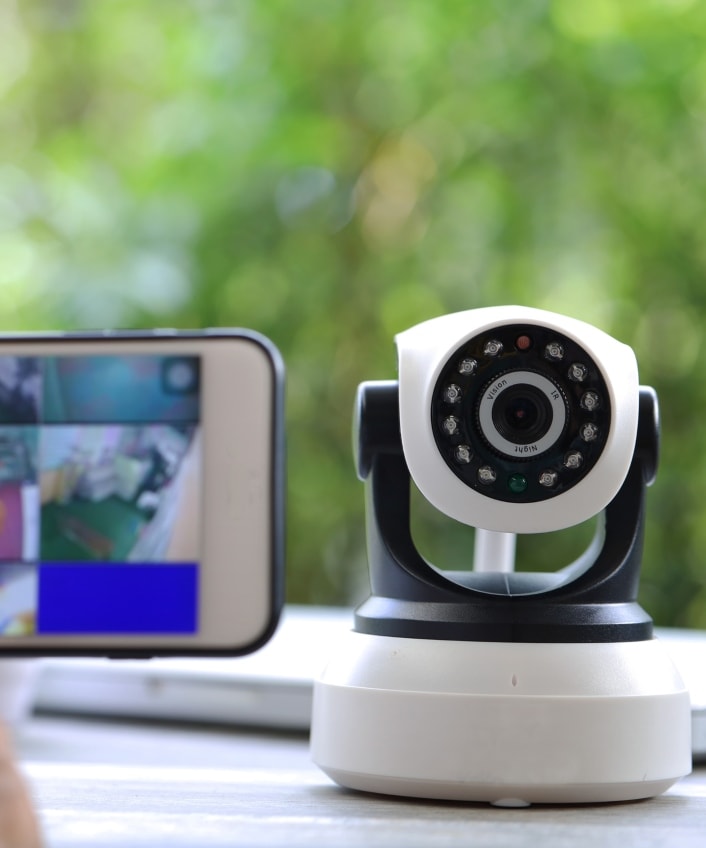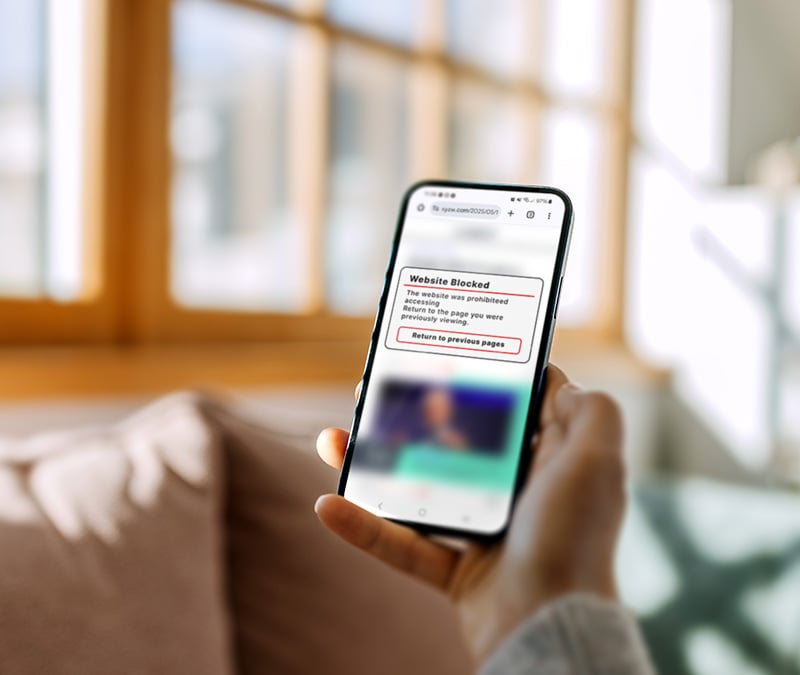How to filter out fake news on social media platforms
Here’s a look at the challenges facing social media platforms and how you can steer clear of disinformation this season.

Disinformation, hoaxes, and conspiracy theories can spread quickly, especially when they are amplified by Facebook, Twitter, YouTube, or other social media platforms.
How can you recognize disinformation when it pops up in your Facebook feed, Twitter timeline, or Instagram stories?
Here’s a look at steps you can take to steer clear of disinformation.
How to protect against disinformation on 5 social media platforms
You can take actions on your own to avoid misinformation. Here are strategies you can use on five social media platforms, including Facebook, Twitter, Youtube, Instagram, and Reddit.
1. Facebook
On Facebook, your first step might be to be selective in whom you follow. The news that fills your Facebook feed is influenced by the users you follow. If you follow users who traffic in conspiracy theories or who spread misinformation, the odds are higher that the posts in your feed will be inaccurate and misleading, too.
It's a good idea to follow reputable news sources and those who provide reliable information that can be backed up by verifiable statistics, interviews, and studies. If you do this, your news feed will include other reliable, fact-based sources.
You can also unfollow or block users if you believe they are frequently sharing fake news or disinformation. If you'd rather take a more intermediate step, you can hide the posts of people and organizations that frequently send bad information. You can also put posters on snooze, which temporarily hides their posts.
If you want to do fact checking on your own, you can check out this list of reliable fact-checking organizations. The list is maintained by American University in Washington, D.C., and is a useful tool if you want to decide whether or not a piece of news you read on Facebook, or any other social media site, is legitimate.
You might also consider exploring the "Why Am I Seeing This" option on Facebook. By clicking this, you'll receive information on why a specific post has shown up in your feed. You might be in an online group, for instance, that frequently posts misleading information. You might find that you comment frequently on a certain account. If you do, this will increase the likelihood that posts from this account will show up in your feed, even if these posts contain inaccurate information.
2. Twitter
Twitter is similar to Facebook in that what you see in your Twitter timeline depends largely on whom you are following. If you follow sources that regularly post misinformation or conspiracy theories, your timeline is more likely to be filled with this kind of distorted information.
That's why it's smart to be selective when choosing whom to follow on Twitter. You could potentially boost your odds of following legitimate news sources by using Twitter's Lists feature. Lists are curated groups of Twitter accounts that you can follow.
A List, for instance, might only include well-known news sites or reliable journalism organizations. If you follow such Lists, you'll likely reduce the amount of conspiracy theories, hoaxes and disinformation in your Timeline.
You could turn to Twitter's Topics section, too. This feature lets you follow specific topics. You might choose to follow COVID-19 news, for example. You can also unfollow subjects that you'd rather not see in your timeline.
3. YouTube
YouTube has become a key source of news for many. The problem? That makes YouTube a target for those hoping to spread fake news and conspiracy theories. It's why YouTube has taken several steps to limit the spread of misinformation from its site.
YouTube reports that since the beginning of 2019, it has launched more than 30 changes designed to reduce the recommendations of borderline content and misinformation.
What are these changes? YouTube now more heavily promotes authoritative content in its "Watch Next" panel when people are watching borderline content in the United States. It has also reduced recommendations to this kind of borderline content.
The hope is that viewers watching questionable content will click on a recommended video from a legitimate news source after watching questionable content, potentially counterbalancing some of the misleading information these viewers had just watched.
You can help stop the spread of fake news on YouTube by reporting violations at this link. You can report conspiracy theories, hoaxes, and scams anonymously.
4. Instagram
Because of its popularity, Instagram, too, has become a target for scam artists, conspiracy theorists, and pushers of fake news. Facebook, which owns Instagram, said that it has hired third-party fact-checkers to check for false information. Facebook says that it works with 45 third-party fact checkers across the globe. These checkers are certified through the International Fact-Checking Network, a non-partisan group.
When these fact checkers find fake or incomplete information, they make it more difficult for users to find by filtering it from Explore and Hashtags. Instagram also reduces the visibility of this information in Instagram Feed and Stories.
If Instagram tags a post as false information, you have two options: You can tap the "See Why" option to read why fact checkers identified the post as fake news or you can click "See Post" to view the information anyway.
Instagram provides several tips to help users spot false information. It recommends that users be especially skeptical of headlines. Scammers often use all-caps in their headlines and end them with several exclamation points. As Instagram says, if the information in a headline appears unbelievable, it is probably fake.
Instagram recommends, too, that you always investigate the source of a post. If you recognize the source — maybe it's the Washington Post, New York Times, The Wall Street Journal, or other reputable news provider — you can determine whether you trust the information.
But if the information comes from a source you've never seen before? You might consider being more skeptical when reading what seem like bombshell revelations or scandalous information.
Watch, too, for misspellings, incorrect grammar, or awkward layouts. These may be signs of false information.
Also be on the lookout for satire. As Instagram says, fake news often comes from parody accounts such as The Onion. These stories are satire and aren't meant to be taken as true. If you read something absolutely shocking on Instagram about a politician or celebrity, make sure the information isn't coming from one of these parody sites.
5. Reddit
It can be particularly challenging to spot — and control — disinformation on Reddit. That's because Reddit is made up of a large network of online communities that are created and run by Reddit users. It can be easy, then, for users with a political agenda to spread misinformation through the site.
Reddit, then, is a loosely policed site. The social media platform, though, does publish a set of rules governing user behavior. This includes not using the site to harass, bully, or threaten others. Reddit also forbids spamming, content manipulation, and impersonating individuals or organizations in a misleading manner.
Users who break the rules can have their accounts temporarily or permanently suspended. Reddit can also ban entire communities and sub-Reddits or quarantine them.
When a community is quarantined, it isn't erased from Reddit. But quarantined sub-Reddits will show a warning that requires users to opt-in to viewing their content. These communities also won't appear in non-subscription-based feeds and are not included in search or recommendations.
Spotting misleading or false information on Reddit takes a careful eye. If you read something surprising or scandalous, make sure to investigate the source behind the claim. If you don’t recognize the source, or recognize it as a known provider of false information, the post you are reading is probably inaccurate, misleading or completely false.
The takeaway on spotting fake news
Social media platforms are an increasingly important way for people to get information and connect with friends and family members. But because sites such as Facebook, Twitter, YouTube, and Instagram are so popular, they are often utilized by those wishing to spread misinformation, promote conspiracy theories, launch hoaxes, and smear political candidates or social causes.
No matter what social media site you use, it’s a good idea to read the content with a critical mind. Something that sounds impossibly shocking could be an example of misinformation. It’s up to you to vet the information you see by researching the source of it and fact checking it online.

Try BotSight for Twitter - FREE Bot Detector Tool
Flag suspected bot accounts on Twitter in real-time. Available on iOS and as a browser extension.
Editorial note: Our articles provide educational information for you. Our offerings may not cover or protect against every type of crime, fraud, or threat we write about. Our goal is to increase awareness about Cyber Safety. Please review complete Terms during enrollment or setup. Remember that no one can prevent all identity theft or cybercrime, and that LifeLock does not monitor all transactions at all businesses. The Norton and LifeLock brands are part of Gen Digital Inc.





Want more?
Follow us for all the latest news, tips, and updates.